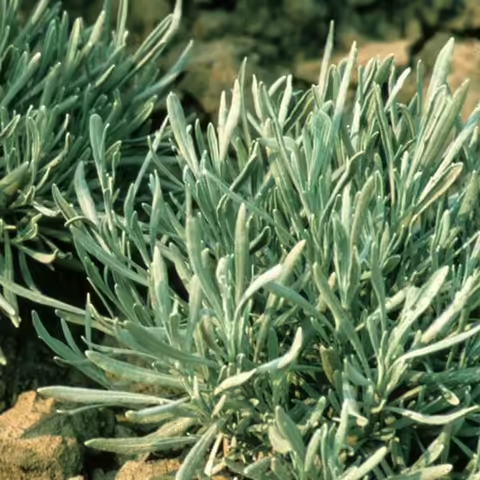Lavender
Lavendula angustifolia
Lavender is a bushy perennial growing from one to three feet tall. The needle-like foliage is blue-green to gray and has a balsam-like scent. The spike flowers are either lavender or white depending on the variety. Lavender is an excellent specimen plant and can be used as a small hedge if site and growing conditions are right. Lavender varieties in the English group and Lavandin group are considered to be preferred choices for Midwest gardening situations.
Growing: Perennial
Lavender is demanding of two things: full sun and extremely well drained soil. Soil that remains wet or is poorly drained, especially over the winter results in plants that have a short garden life. It is dampness more than cold that is responsible for killing lavender plants. Wet, poorly drained soil and high humidity and poor air circulation between plants in the summer lead to the decline of plants.
If drainage is an issue, consider growing lavender in raised beds. Here soils can be easily modified and the raised planting area affords better drainage. While lavender is drought-tolerant once established, new plantings benefit from regular watering during the first year. Lavender also likes good air circulation. Do not crowd plants and allow for ample space between them to achieve good air circulation and dry foliage. Lavender also likes to be mulched with inorganic mulches such as rock or pea gravel. This helps keep the crown dry and prevents excess moisture form causing foliage diseases. Do not cut back plants in the fall. Wait until some new growth starts to appear in the spring before doing any pruning. In cold growing areas, lavender benefits from a winter mulch of evergreen boughs or straw placed over the planting after the plants have gone completely dormant and the ground initially freezes. Lavender is best started from cuttings. While seed is available, it is slow to germinate and many varieties do not come true from seed.
Popular Varieties
English Group
- ‘Hidcote’ – Compact, silver-gray foliage, deep purple flowers.
- ‘Munstead’ – Compact, green foliage, lavender-blue flowers.
- ‘Twickel Purple’ – Long, deep purple flower spikes, heavy fragrance.
- ‘Mini Blue’ – Compact lavender for container and edging. Very consistent uniform habit from seed grown plants.
Lavandin Group
- ‘Phenomenal’ – Extremely vigorous variety that is highly tolerant of heat and humidity and resistant to common root and foliar diseases. Long lavender flower spikes.
- ‘Provence’ – Vigorous, long stemmed variety, very fragrant.
Harvesting
Cut stems of lavender just as the flowers start to open. It is at this stage that the spikes will have the strongest scent. Hang in small bunches in a cool, dry, dark well-ventilated area to dry.
Use
Most lavender is used for scenting potpourri and sachet mixtures. It also can be used in a culinary fashion in beverages as well as for pork, fish and chicken dishes. Caution is advised though to use it sparingly as a little goes a long way.
